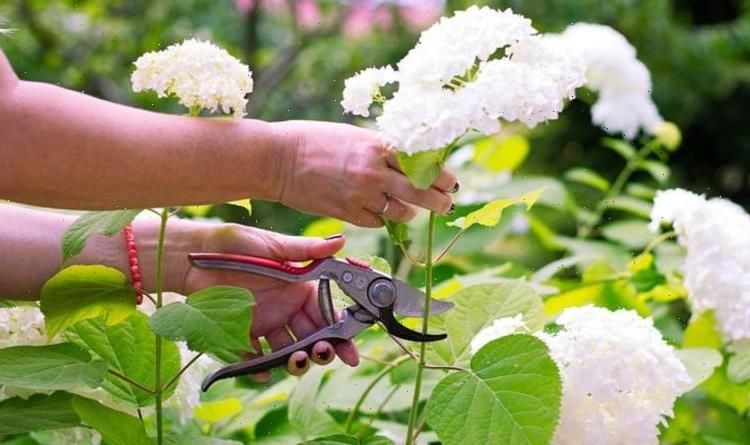Gardening: Expert demonstrates how to deadhead flowers
We use your sign-up to provide content in ways you’ve consented to and to improve our understanding of you. This may include adverts from us and 3rd parties based on our understanding. You can unsubscribe at any time. More info
Deadheading your plants is common practice for most varieties of shrubs as it helps to promote re-growth by removing any fading blooms and refocusing energy on the production of new flowers. Knowing the right way to deadhead your plants is the key to stimulating the re-flowering process throughout the year and should be done in addition to regular pruning. But what is the best way to keep your hydrangeas looking bold and bright in your garden?
What’s the difference between pruning and deadheading?
Pruning your plants involves cutting branches in order to keep them neat and promote steady growth.
Deadheading is a less aggressive process that involves the simple removal of spent flower blossoms and is done to redirect the plant’s energy in order to maintain its vibrant aesthetic.
But how – and when – should you do it? Read on to find out a full guide.


When should I deadhead my hydrangea?
The best way to keep up appearances with your hydrangea is to deadhead your plant in early spring.
This is usually done once the shrub has flowered and made it through the harsh winter weather.
Deadheading your hydrangea is very easy and can be done using just a pair of scissors or secateurs.

Simply cut back the stem to the first strong, healthy pair of buds just down from the faded blooms on top to reveal the budding layer of growth ahead of the summer months.
Don’t get too scissor-happy: these small buds are the new plant growth already taking hold.
If you cut these accidentally you won’t have the same beautiful blooms the following season.
DON’T MISS:
When to prune bay tree – THREE conditions to watch out for [TIPS]
What to sow in your garden this August- full guide [EXPLAINER]
When to prune philadelphus in the UK [INSIGHT]

TIPS
Don’t be tempted to deadhead a hydrangea in the winter as the dead blooms can be a great source of protection for the new buds which will arrive in early spring.
Lacecap hydrangeas are a hardier variety, and the faded flower heads can be cut back further than most hydrangeas.
The Royal Horticultural Society recommends that lace caps are deadheaded after flowering, to the second pair of leaves below the head in order to prevent seed developing, which saps energy from the plant.
Can I deadhead my hydrangea now?
If you are deadheading your hydrangea in August or anytime thereafter you should take extra care when cutting to determine where the new buds are growing along the stems.
Check underneath each set of leaves from the faded bloom all the way down the stem and then go ahead and snip off any spent blooms you can see.
Source: Read Full Article
